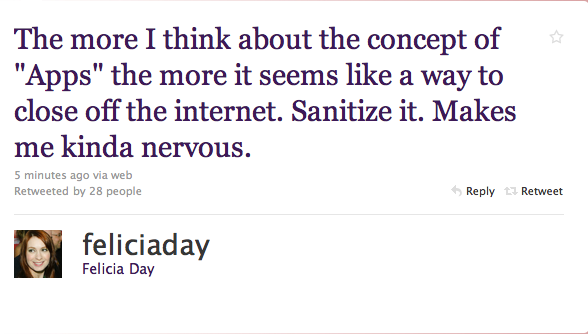Eighteen months ago, John Paczkowski speculated that Apple may want to use their considerable war chest of cash to buy Adobe. Adobe is currently worth around $18 Bn and Apple has around $30-35 Bn in the bank (Apple themselves are, at the time of this writing, worth $215 Bn. This is why I think Apple … Continue reading “ADBE vs AAPL”
Eighteen months ago, John Paczkowski speculated that Apple may want to use their considerable war chest of cash to buy Adobe. Adobe is currently worth around $18 Bn and Apple has around $30-35 Bn in the bank (Apple themselves are, at the time of this writing, worth $215 Bn.
This is why I think Apple has been maintaining such a strong position against Adobe over the last two years. They’re trying to reduce the stock price (as well as maintain control over a platform).
Adobe made less than half a million dollars in income last year and has been increasing it’s debt. We know in comparison that Apple has no debt at all and reported $3.38 billion in profits last quarter (Apple will release their next quarterly results in about two weeks).
[UPDATE: The figures are in thousands so I’m out there. But it means the debt is in thousands as well which puts them about a billion in debt.]
@webtwozero writes:
@cimota why would apple buy adobe? they don’t like flash, which pretty much rules out director too, they after photoshop, and premiere?
They’re after Photoshop, to adopt it in. They’re also after Premiere and Lightroom, with a view to either enhancing or replacing Final Cut Pro and Aperture. I think they’re also after Acrobat, Flex, Flash I reckon they have no good intentions towards them.
GodsWearHats writes:
@cimota AAPL vs ADBE: I don’t think Apple wants them, tbh. Doesn’t strike me as Steve’s style.
They’d already done something similar to the music sector when they purchased eMagic and made Logic Mac-only. And they did the same with Nothing Real and Shake.
Lomifeh writes:
@cimota I don’t really want them to buy adobe. The companies seem too dissimilar in philosophy. I’d prefer them forcing adobe to act right
To my mind, Adobe made their bed when they stopped feature parity on the Mac with the Windows version. They still haven’t rectified this and as a result Apple and Mac users have been treated like second class citizens. On top of that, the use of Flash in video undermined QuickTime, Lightroom undermines Aperture and it’s possible they see Premiere as a competitor to Final Cut Pro.
Adobe has also dragged it’s feet on the releasing apps which take advantage of Mac OS X technologies and there’s no way that Apple would permit Adobe to control access to their OS features the way they already have manipulated the market with Flash. Adobe was one of the major reasons for Carbon due to their reluctance to rewrite their application portfolio in Cocoa – something which still hasn’t been done after ten years of Mac OS X.
If Flash is the real bone of contention here then I’ll be very surprised. Flash video has always been little more than a hack – a compatibility layer that locks video into a proprietary format for later display. the poor performance of Flash on Mac hardware underlines the need for Apple to react. While I may lament the loss of many excellent education and entertainment games which have been developed in Flash, the truth is that many of these games simply will not work with a touch-based interface. They use a lot of facilities such as ‘hover’ which is possible with a virtual cursor but not possible with a touch interface. As a result, running Flash-based games and education tools on the iPad or iPhone would result in a substandard experience with poor performance and in both cases Apple would shoulder the blame.
Is it any wonder that Apple now feels they have to take a strong position.
That said, I feel that last night’s presentation on iPhone OS 4 was a rush-job, meant to try and stop a drama from turning into a crisis. If Adobe had announced CS5 officially and then demonstrated it and Apple had refused to stock the apps in the AppStore, then it would have been bad for both. I do think, on the other hand, that Apple is being curiously heavy handed here.



